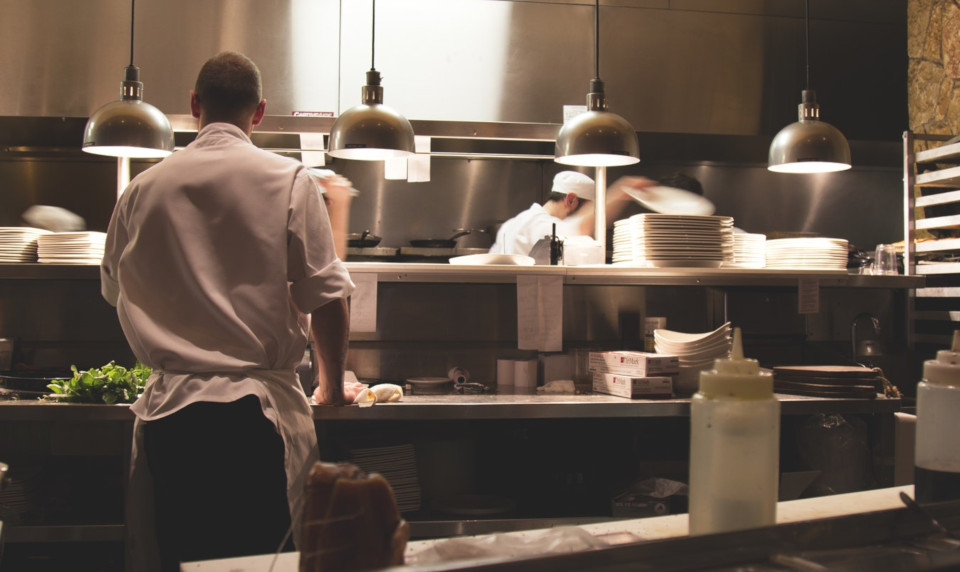EDTALK | TOKYO, Japan:
The Ministry of Agriculture, Forestry and Fisheries has established Guidelines for the Certification of Japanese Cuisine Cooking Skills for Japanese Cuisine in Foreign Countries as of April 2016.
This system lays out specific standards that private bodies may use to recognize foreign chefs who have acquired given levels of knowledge and cooking skills necessary for the preparation of Japanese cuisine, to help ensure that the appeals of Japanese food and dietary culture, as well as of Japanese agricultural and marine products, are appropriately and effectively communicated throughout the world.*
And through it, the private sector is able to position itself as a driving force in promoting efforts to certify Japanese cuisine cooking skills, increasing the number of certified individuals, and fostering further growth in foreign chefs who have acquired the appropriate knowledge and skills for preparation of Japanese cuisine, all with the ultimate goal of further strengthening the global reputation of Japanese food and dietary culture and expanding consumption of Japanese agricultural and marine products.
To that end, TOW Co., Ltd. is actively engaged as the Application/Management Body of the Certification System. As of March 2021, it has approbated 11 certifying bodies, which have in turn recognized 14 individual chefs as meeting Gold Certification standards, 187 meeting Silver, and 389 meeting Bronze.
Though the COVID-19 pandemic has dealt a significant blow to the food service industry worldwide, TOW Co., Ltd. remains committed to carrying out its missions, and to encouraging all foreign chefs aspiring to obtain the knowledge and skills to properly prepare Japanese cuisine. It is our hope that the creation and sharing of this video introducing the System for Certification of Japanese Cuisine Cooking Skills will help fulfill those goals.
*Certification Standards for Japanese Cuisine Cooking Skills are as below
Gold
Those who have approximately two years practical experience in a Japanese restaurant located in Japan whose head chef is Japanese and are deemed to have acquired knowledge and skills specified.
Knowledge and Skills to be Acquired
- Knowledge regarding Japanese dietary culture
Knowledge regarding Japanese dietary culture, Japanese foods, eating style, Japanese sake and tea. - Knowledge regarding hygiene management
Types and prevention of food poisoning, clothing, handling of food ingredients, cleaning and sterilization of cooking utensils and equipment, food ingredients and foods that require heating treatment. - Techniques
How to use Japanese cooking utensils and equipment, how to select food ingredients, how to cut and peel food ingredients, procedures and hours required for cooking, heat level/mechanism of application of heat, how to make dashi (Japanese soup stock), blending ratios of seasonings, presentation, preservation method, preparation of menu. - Omotenashi
Words, greeting, consideration, manners, how to place meals.
Silver
Those who took lessons and acquired knowledge and skills regarding Japanese cuisine specified approximately one year at any cooking schools located in and out of their own country and then graduated from said school.
OR
Those who have approximately one year practical experience in a Japanese restaurant located in Japan whose head chef is Japanese and are deemed to have acquired knowledge and skills specified.
Knowledge and Skills to be Acquired
- Knowledge regarding Japanese dietary culture
Knowledge regarding Japanese dietary culture, Japanese foods, eating style - Knowledge regarding hygiene management
Types and prevention of food poisoning, clothing, handling of food ingredients, cleaning and sterilization of cooking utensils and equipment, food ingredients and foods that require heating treatment. - Techniques
How to use Japanese cooking utensils and equipment, how to select food ingredients, how to cut and peel food ingredients, blending ratios of seasonings, procedures and hours required for cooking, heat level/mechanism of application of heat, how to make dashi (Japanese soup stock), presentation, preservation method. - Omotenashi
Manners, how to place meals
Bronze
Those who received training regarding knowledge and skills specified in short-term sessions etc. organized by any Japanese cooking school and/or private bodies located in and out of their own countries and then passed the examination conducted by the Certification Body.
Knowledge and Skills to be Acquired
- Knowledge regarding Japanese dietary culture
Knowledge regarding Japanese dietary culture - Knowledge regarding hygiene management
Prevention of food poisoning, clothing, handling of food ingredients, cleaning and sterilization of cooking utensils and equipment, food ingredients and foods that require heating treatment. - Techniques
How to use Japanese cooking utensils and equipment, how to select food ingredients, how to cut and peel food ingredients, blending ratios of seasonings, procedures and hours required for cooking, presentation, preservation method. - Omotenashi
Manners

[https://tow.co.jp/certification/]
Follow this link for a documentary that demonstrates the value of the certification system through the stories of foreign chefs attempting the test for Gold Certification, the system’s highest outlined standard.
News Disclaimer: This story is provided by Redact India. The EdTalk will not be responsible in any way for the content of this article.
Source: Redact India
SUBSCRIBE NOW
Join 10000+ Members

